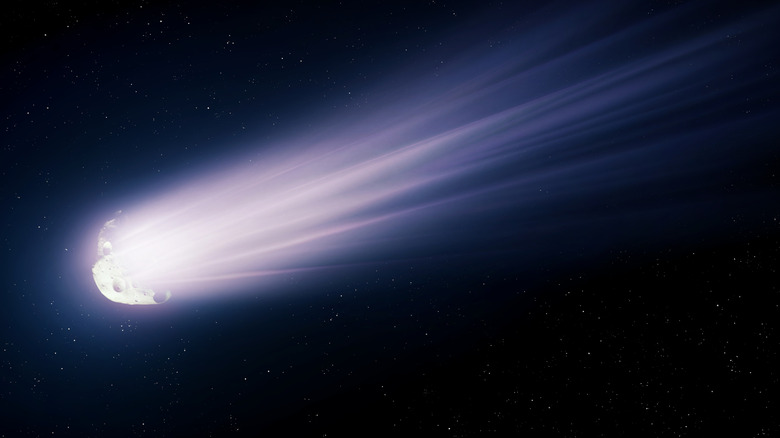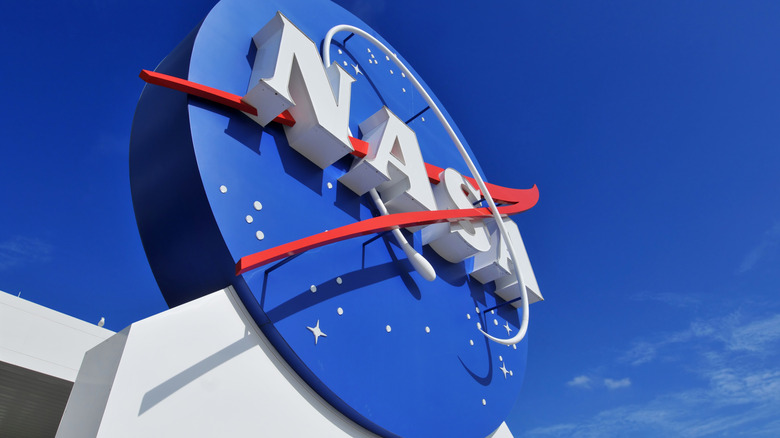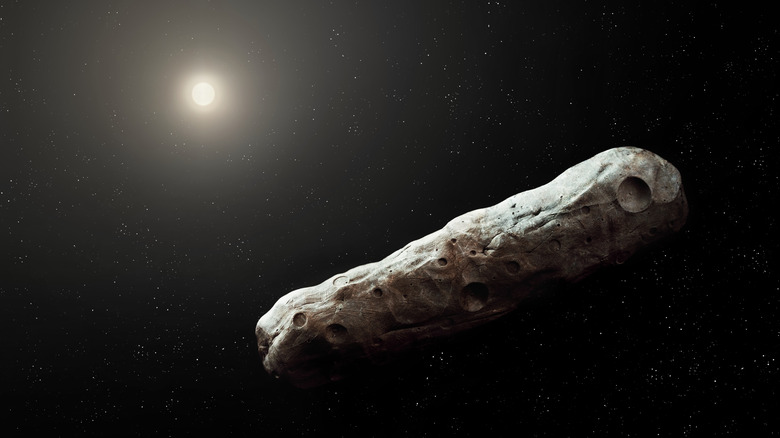Could Comet 3I/Atlas Be A Threat? Here's What Experts Are Saying
On the 1st of July 2025, the Asteroid Terrestrial-Impact Last Alert System (ATLAS) in Chile spotted a new comet entering our solar system. This comet was named 3I/ATLAS, as it's only the third interstellar object humans observed passing through our solar system. The previous two interstellar bodies discovered were 1I/'Oumuamua (spotted in 2017), and 2I/BORISOV (detected in 2019). It seems that 3I/ATLAS is similar to 2I/BORISOV by its icy composition. Beyond that, we don't know much about the new interstellar visitor. Scientists rush to observe 3I/ATLAS and discover as much as they can, as it's predicted by its current trajectory and speed to leave our solar system by the end of the year.
It will come closest to our sun in late October 2025, and the sun will melt some of its ice, which means 3I/ATLAS might get a robust comet tail composed of vapor and dust. Currently, this comet has a faint coma, the cloud of dust and gas that surrounds its nucleus. But this might change with its approach to the sun. Another interesting fact is that 3I/ATLAS will pass through Mars' orbit, and we don't know what will happen then.
The fact that it was ATLAS that first discovered this comet got some people concerned. The Asteroid Terrestrial-Impact Last Alert System has a defensive nature. It's designed to spot and warn us about comets, asteroids, or other space objects that might be on a collision course with Earth. However, according to NASA, the interstellar object will most likely fly far enough from our planet without posing any danger.
What NASA has to say
The ATLAS observatory in Chile is part of NASA's early warning program, spotting and defining all near-Earth objects (NEOs), especially if they're asteroids and comets that could strike our planet. ATLAS uses a network of wide-field telescopes that scan the night sky above Earth 24/7. Although designed for planetary defense against hazardous space objects, ATLAS is capable of detecting non-threatening, but scientifically interesting objects as well. The telescopes that are part of this defensive network are based in several observatories around the globe (South Africa, California, and Chile, to name a few), providing the researchers with round-the-globe coverage of the night sky.
Of course, when 3I/ATLAS was first discovered, the first things determined were its trajectory and velocity. It was concluded that this comet is traveling at the speed of 137,000 miles/hour (61km/s), and the closest it will approach Earth is at 1.8 astronomical units (170 million miles, or 270 million kilometers, from Earth). NASA has ultimately concluded that 3I/ATLAS poses no threat to our planet.
That said, the most interesting known fact about this interstellar visitor is its age. Following its current trajectory, scientists were able to determine 3I/ATLAS originated in a part of the Milky Way that we know is older than our solar system; meaning it's potentially older than 4.6 billion years old. It's estimated that 3I/ATLAS is around 7 billion years old, making it the oldest comet observed by humans so far.
Could it be an alien probe?
Although very little is known about 3I/ATLAS so far, there are many interesting theories surrounding this interstellar visitor. Harvard-based astrophysicist Abraham Loeb and colleagues from the UK's Initiative for Interstellar Studies, Adam Hibbert and Adam Crowl, believe this interstellar object is not a comet at all; but an alien probe coming from afar to scan Earth and its surroundings.
This is not the first time Loeb has suggested such a thing. In 2017, when Oumuamua was discovered, he claimed it was an alien probe due to its unusual shape, acceleration, reflectivity, and lack of trailing gases. Although he didn't come out with any specifics about 3I/ATLAS, Loeb warns that any interstellar object should be observed as possible alien technology.
As of now, there's no evidence that 3I/ATLAS is anything but an interstellar comet passing through our solar system. It was lucky that ATLAS detected it, as it is believed millions of such objects pass near or through our system without ever being detected. Scientists such as Loeb might not be completely wrong, however. 3I/ATLAS is a unique interstellar comet, and we should pay more attention to it.


